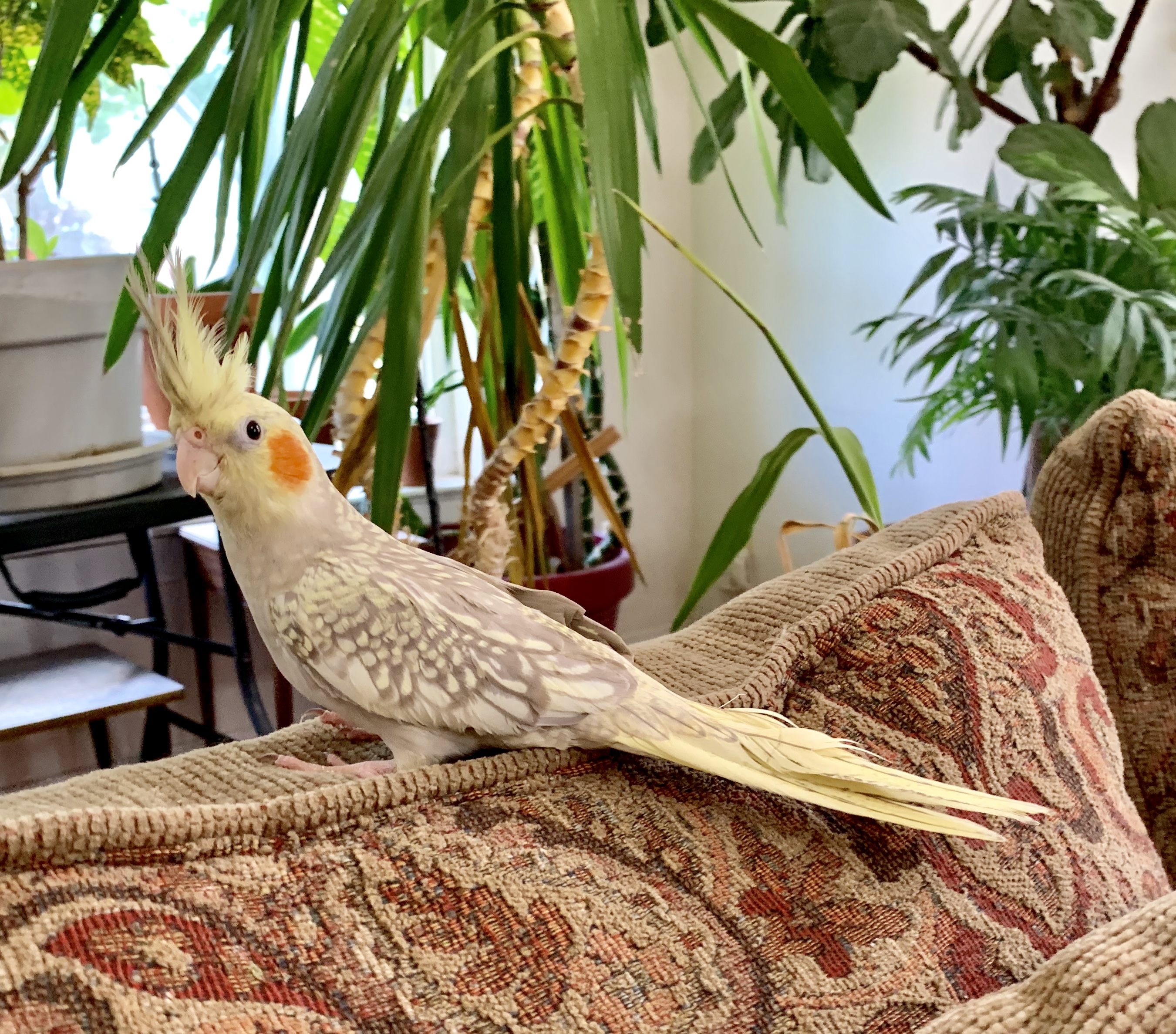What Are Blood Feathers?
- Cary

- Jun 23, 2019
- 3 min read
Blood feathers or pin feathers develop early during the growth of a bird. This type of feather can grow as a new feather during the bird's infancy, or grow to replace one from molting.
The feather has a blood supply that goes to the follicle and feeds the feather. Due to the color of the blood supply, the shaft of a blood feather will appear dark, whereas the shaft of an older feather will be white.
As the pin feather grows longer, the blood supply is concentrated in only the base of the shaft, and the tip of the shaft encases the feather itself, in a waxy coating. As molting birds preen, they remove the waxy coating, and the feather unfurls.
Cockatiel Care
During molting, a bird may get careless and begin to chew at its feathers and might accidentally damage a blood feather. To prevent this, it is necessary that the bird be given chewing toys so that it does not chew at its own feathers. Pin feathers are sensitive, and some pet birds do not enjoy being handled while molting for this reason. Also Night Trashing can be responsible for a blood feather getting damage.
What to Do if a Blood Feather Starts to Bleed
Cockatiels does not have a lot of blood, so any lost of blood can be dangerous for the survival of the bird.
When a blood feather breaks the bird has no ability to stop the bleeding because a broken blood feather works almost like a 'drinking straw' directly hooked to a blood vessel, so it is necessary to pluck the feather from its base at the follicle. It's important that you remain calm and have confidence when performing this task. Once the feather is pulled, the follicle in the skin closes and bleeding should stop, you can also apply some Kwik Stop to the follicle as a preventive measure. Apply gentle pressure to the follicle with a sterile material like gauze for about 60 seconds or until you feel a clot has formed. If your cockatiel is still bleeding do take your bird immediately to your local vet.
You should always have handy by your cockatiel's cage and as part of your bird's emergency first aid kit needle nose pliers or a hemostat, a towel and Kwik Stop to treat the blood feather injury.
It's best to have 2 people, one to hold the bird carefully and the other to pull the feather. When holding the bird make sure you are not putting any pressure on the chest of the bird, as this will make the bird breathing difficult. Your cocktail is very fragile, so it's important that you try to hold the bird in place gently but firmly without too much pressure while the feather is being pulled out. If it is a wing feather, support and immobilize the wing to keep it steady during the procedure. Do not jerk on or twist the feather.
Pulling a blood feather is very painful for your cockatiel but you are saving its life, the alternative is a bird that would bleed to death.
Your cockatiel will inevitably experience a broken blood feather at some point in its life, so being informed and prepared is the best thing you can do for your bird. It helps to watch your bird carefully when new feathers are coming in and visually inspect your bird daily. Even a quick once over in the morning and at night can help you catch a problem early.
If for some reason you are not able to pull the blood feather out, you can try to use some cornstarch and try to plug the broken feather at the tip where it broke and then take your bird to your local vet so that the feather can be pulled out.
As always the information offered here is to provide guidance and is not intended to be a substitute for the good advice provided by your own avian vet. When in doubt always consult your own veterinarian.














Comments